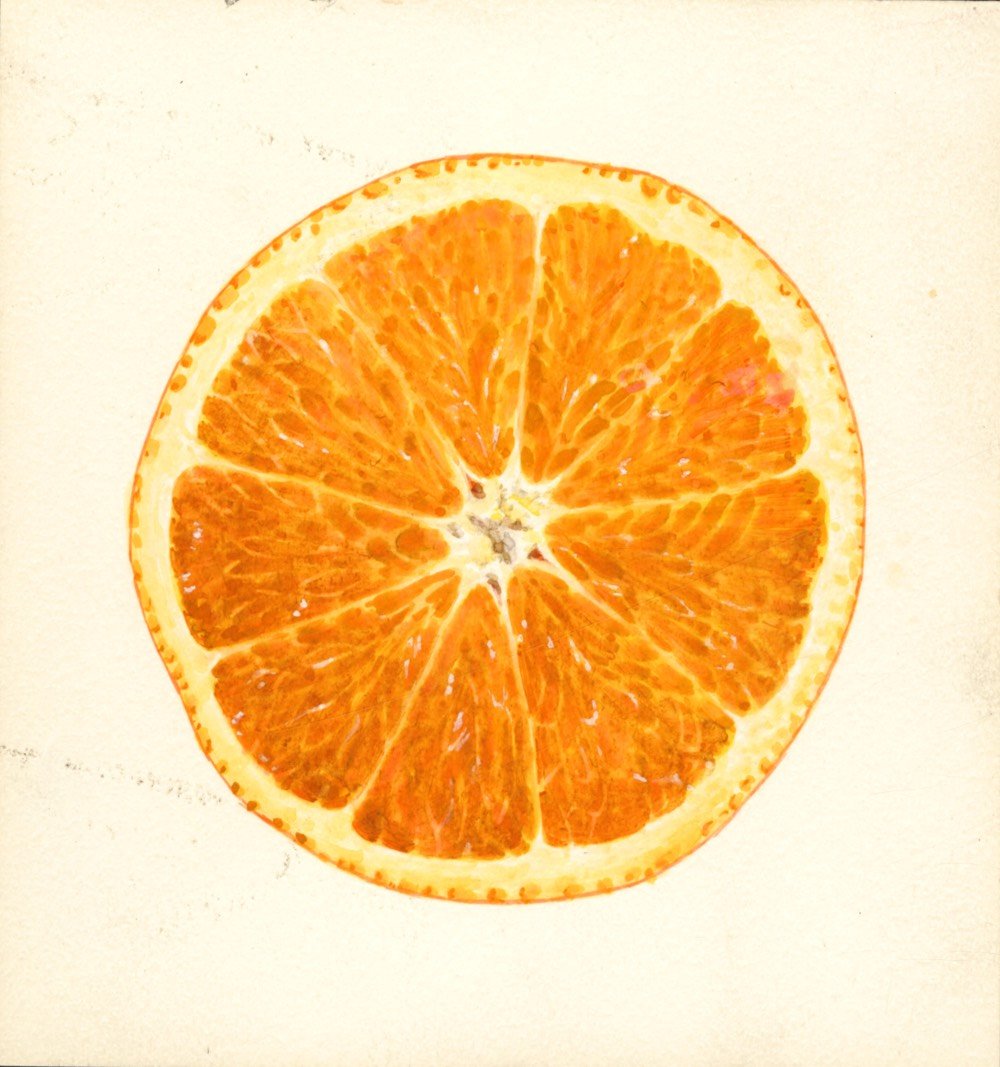The etymology of “orange”: which came first, the color or the fruit?

The human eye can see millions of colors but it can take awhile for language to catch up. Take the color orange. Until the 16th century, there was no word for that color in English and even then, when writers referenced it, they said something like “that thing that is the color of an orange”.
Orange, however, seems to be the only basic color word for which no other word exists in English. There is only orange, and the name comes from the fruit. Tangerine doesn’t really count. Its name also comes from a fruit, a variety of the orange, but it wasn’t until 1899 that “tangerine” appears in print as the name of a color-and it isn’t clear why we require a new word for it. This seems no less true for persimmon and for pumpkin. There is just orange. But there was no orange, at least before oranges came to Europe.
This is not to say that no one recognized the color, only that there was no specific name for it. In Geoffrey Chaucer’s “Nun’s Priest’s Tale,” the rooster Chaunticleer dreams of a threatening fox invading the barnyard, whose “color was betwixe yelow and reed.” The fox was orange, but in the 1390s Chaucer didn’t have a word for it. He had to mix it verbally. He wasn’t the first to do so. In Old English, the form of the language spoken between the 5th and 12th centuries, well before Chaucer’s Middle English, there was a word geoluhread (yellow-red). Orange could be seen, but the compound was the only word there was for it in English for almost 1,000 years.
Also, it has never occurred to me before reading this that “chromatically brown is a low-intensity orange”. !!! Anyway, this piece is an excerpt from the book On Color.
See also literature’s slow invention of the color blue. Orange painting by James Shull (via jodi)





Stay Connected